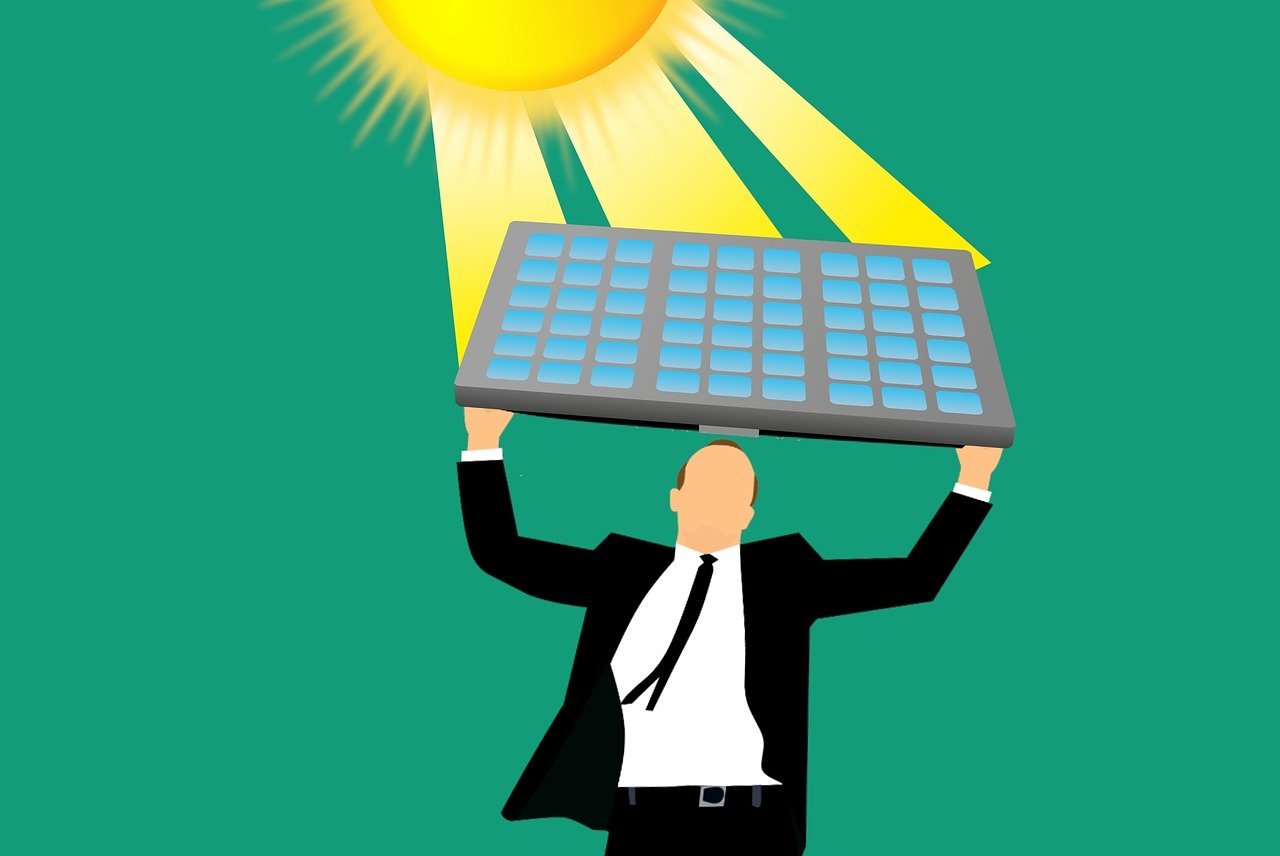

In the first six months of 2020, 6.4% less carbon dioxide was emitted than in the same period in 2019. Global Earth champions are calling for governments to capitalise on this exaggerated drop by ‘building back better’ and, in doing so, tackling the climate and biodiversity crises. Despite this, the public policy outpouring during the pandemic overwhelmingly supports non-eco-friendly industries, and virtually no measures foster conservation.
This underinvestment in clean energy and conservation likely stems from uncertainty surrounding the economic benefits of ‘green’ investing. To bridge this gap, a new IMF working paper explores whether public and private sector investment in clean energy activities has positive short- to medium-term growth effects. Estimating the effects of transitioning to a zero-carbon, nature-friendly world, they find:
This article is only available to Macro Hive subscribers. Sign-up to receive world-class macro analysis with a daily curated newsletter, podcast, original content from award-winning researchers, cross market strategy, equity insights, trade ideas, crypto flow frameworks, academic paper summaries, explanation and analysis of market-moving events, community investor chat room, and more.
Summary
- Every dollar spent on carbon-neutral or carbon-sink activities generates over a dollar’s worth of economic activity, finds a new IMF working paper.
- This positive multiplier effect persists for at least four years and the impact on economic activity is 2-7 times larger than those associated with environmentally detrimental measures.
- The results indicate that ‘building back better’ post-Covid does not require sacrificing GDP growth, even in the short term.
Introduction
In the first six months of 2020, 6.4% less carbon dioxide was emitted than in the same period in 2019. Global Earth champions are calling for governments to capitalise on this exaggerated drop by ‘building back better’ and, in doing so, tackling the climate and biodiversity crises. Despite this, the public policy outpouring during the pandemic overwhelmingly supports non-eco-friendly industries, and virtually no measures foster conservation.
This underinvestment in clean energy and conservation likely stems from uncertainty surrounding the economic benefits of ‘green’ investing. To bridge this gap, a new IMF working paper explores whether public and private sector investment in clean energy activities has positive short- to medium-term growth effects. Estimating the effects of transitioning to a zero-carbon, nature-friendly world, they find:
- After just one year, the GDP increase from clean energy investment is 1.2 times the size of the initial spend. Over four years, it is 1.14 times, showing a persistent and disproportionately large rise in GDP growth from investing in clean energy.
- Investing in biodiversity conservation has an even larger multiplier effect (5.45 after four years). Meanwhile, spending on non-eco-friendly industries, such as fossil fuels or conventional agricultural activities, crowds out private investment that would otherwise have occurred.
- The disproportionately large return on green investment is because renewable energy and biodiversity sectors are much more labour intensive than, say, fossil fuel technologies. So, more jobs are created for each unit of electricity generated from renewable sources than fossil fuels.
The Climate Jackpot
The reduction in global emissions during the pandemic was a welcome boon in the fight against climate change. But emissions must drop by the same rate every year for the next few decades to prevent global temperatures from increasing more than 1.5°C relative to the pre-industrial era – a necessary target to stave off climate change’s worst effects. This contextualises the scale of green investment required to combat rising global temperatures. Yet, pre-pandemic investment was below target.
According to the paper’s authors, public and private sector spending on hydro renewable energy is only half that required to limit the global temperature increase this century to 2°C. And just $27bn of the $600bn spent per year on agricultural support in countries producing two thirds of the world’s agricultural output directly supports conservation. Indeed, estimates suggest we require 4-7 times more than the current investment in biodiversity conservation to conserve and restore nature.
The historical underinvestment in clean energy and conservation need not continue. In the current climate, fiscal policy provides the main source of growth, and ever more academic literature finds relatively large output effects from government expenditure when the zero lower bound constrains monetary policy. And so a greener recovery may not entail lower growth.
Methodology and Data
To quantify the impact of green measures on GDP, the authors focus on areas of economic activity which science identifies as having a high impact on sustainability. In particular, they consider Clean Energy and Ecosystem Conservation expenditure (referred to as ‘green’ expenditure). Green expenditures are historically defined as spending that helps reduce greenhouse gas emissions. But the paper’s authors expand the definition to include examples of nature-based negative emissions technologies in the form of expenditure on biodiversity conservation and rewilding.
The authors use unique datasets. They capture both green energy and land use (their proxy of biodiversity) spending, as well as non-eco-friendly energy and land use spending. The annual data ranges from 1991 to 2019 and covers over 30 countries.
Green Energy and Land Use Spending Data
Green energy expenditure includes spending on both renewables and non-renewables. The data on clean renewable energy consists of International Energy Agency (IEA) estimates of capital spending on power generation using renewable sources from 2000 to 2020. Capital expenditures on non-renewable energy (nuclear) are based on reactor-specific overnight construction cost (OCC) data provided by the OECD’s Nuclear Energy Agency.
For land use data, the authors focus on spending on biodiversity conservation. The data covers four main sources of funding from 1994 to 2008: domestic governments, international aid (including donations from private foundations), long-term endowment-based systems such as conservation trust funds, and self-funding arrangements such as when tourism revenue to a national park is recycled to subsidize the park’s running costs.
Non-Eco-Friendly Energy and Land Use Spending Data
Similar to green energy spending, the authors collect data from the IEA. It records annual total capital spending on fossil fuels by 11 countries (Oceania Group merging Australia and New Zealand; Brazil; Canada; China; EA Group merging France, Germany and Italy; Indonesia; Japan; Korea; Mexico; Russia; the USA) over the period 2000-2020. Data on investment in electricity reflect annual capital expenditure to replace old assets or on new power plants and network assets.
For non-eco-friendly spending, the authors focus on agricultural subsidies to conventional agriculture based on an elaboration of OECD producer support estimates (PSE) data. In particular, they focus on the difference between all subsidies and the small percentage of these that are classifiable as ‘green’ (i.e., earmarked as explicitly supporting conservation and/or research and technical assistance items).
Results
The authors begin by comparing a rise in investment in clean energy versus non-eco-friendly energy (Chart 1, left vs right panel). A 1% rise in spending on green renewable energy has a much more persistent effect on GDP than an equally sized shock to fossil fuel energy spending. For clean energy spending, the multiplier effect (see Appendix for a definition) is 1.19 in the first year and well above zero beyond the medium term (five years). The spending effect is lower for non-eco-friendly investment (0.65), suggesting that these kinds of expenditures tend to crowd out private investment or consumer spending that would have otherwise occurred to a larger extent.
The multiplier is higher because clean energy is more labour intensive than carbon-based fuels spending. In addition to the jobs directly created in the renewable energy industry, growth in clean energy can create positive economic ripple effects (e.g., both industries in the renewable energy supply chain and unrelated local businesses will benefit). According to the authors, the jobs created are of all pay levels, which is untrue in the fossil fuel industry. Recent studies show workers in clean energy sectors earn 10-20% more than the national average.
Next, the authors turn to a spending shock comparison between ecosystem conservation and subsidies to conventional agriculture. Again, an increase in green expenditure, this time through conservation, crowds in investment (multiplier above one). The impact on GDP begins negative but then increases significantly past the first year and remains high relative to non-eco-friendly expenditure (Chart 2). Specifically, every dollar spent in conservation generates almost seven more in the larger economy in the medium term.
One reason for the large multiplier effect is that conservation activity has a strong labour intensity. Much of conservation’s economic impact is in driving a visitor economy, with associated creation of opportunity and income in sectors such as hospitality and tourism in rural and coastal communities. Also, by limiting the land available for agricultural expansion, conservation spending lifts the prices paid to rural producers.
Bottom Line
In a secularly stagnated world, every penny of government and private sector investment matters for future growth. And then, the hope for any policy or venture is that the investment yields a disproportionately large return. The IMF paper shows that investment in clean energy not only disproportionately stimulates growth today but crucially brings long-lasting, tangible benefits. As such, post-pandemic policies should lean towards cleaner industries.
Appendix
Multipliers
Spending multipliers represent the multiple by which GDP increases or decreases in response to an increase or decrease in, for example, investment expenditure. Fiscal multipliers have become increasingly popular in recent years as academic research focuses on the output effects of various government policies (Chart 3). In the IMF paper, the authors focus on investment multipliers, which relate to public and private spending.
Multipliers are interpreted as so. A value of the cumulated spending multiplier equal to 1.5 in the third year would indicate that, after three years from the spending shock’s occurrence, the cumulative increase in output, in dollar terms, is 1.5 times the size of the cumulative increase in green (or non-eco-friendly) expenditure.
A multiplier can be greater than one when expenditures circle through the economy, crowding in additional spending. In this paper: firms investing in renewables pay workers and suppliers; workers and suppliers buy goods from other firms; those firms pay their workers and suppliers; workers spend on consumer goods, generating further streams of income and so on.
Citation
Batini N. Et. Al., (2021), “Building Back Better: How Big Are Green Spending Multipliers?”, IMF, Working Paper 2021/087 https://www.imf.org/en/Publications/WP/Issues/2021/03/19/Building-Back-Better-How-Big-Are-Green-Spending-Multipliers-50264
Sam van de Schootbrugge is a macro research economist taking a one year industrial break from his Ph.D. in Economics. He has 2 years of experience working in government and has an MPhil degree in Economic Research from the University of Cambridge. His research expertise are in international finance, macroeconomics and fiscal policy.
(The commentary contained in the above article does not constitute an offer or a solicitation, or a recommendation to implement or liquidate an investment or to carry out any other transaction. It should not be used as a basis for any investment decision or other decision. Any investment decision should be based on appropriate professional advice specific to your needs.)
